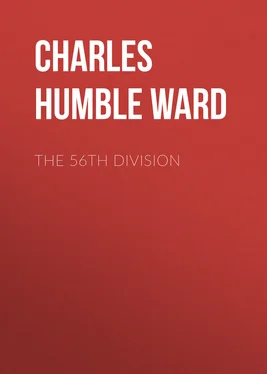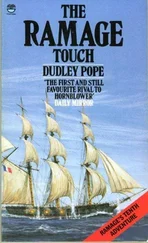Charles Humble Dudley Ward - The 56th Division
Здесь есть возможность читать онлайн «Charles Humble Dudley Ward - The 56th Division» — ознакомительный отрывок электронной книги совершенно бесплатно, а после прочтения отрывка купить полную версию. В некоторых случаях можно слушать аудио, скачать через торрент в формате fb2 и присутствует краткое содержание. Жанр: foreign_prose, История, foreign_edu, foreign_antique, на английском языке. Описание произведения, (предисловие) а так же отзывы посетителей доступны на портале библиотеки ЛибКат.
- Название:The 56th Division
- Автор:
- Жанр:
- Год:неизвестен
- ISBN:нет данных
- Рейтинг книги:5 / 5. Голосов: 1
-
Избранное:Добавить в избранное
- Отзывы:
-
Ваша оценка:
- 100
- 1
- 2
- 3
- 4
- 5
The 56th Division: краткое содержание, описание и аннотация
Предлагаем к чтению аннотацию, описание, краткое содержание или предисловие (зависит от того, что написал сам автор книги «The 56th Division»). Если вы не нашли необходимую информацию о книге — напишите в комментариях, мы постараемся отыскать её.
The 56th Division — читать онлайн ознакомительный отрывок
Ниже представлен текст книги, разбитый по страницам. Система сохранения места последней прочитанной страницы, позволяет с удобством читать онлайн бесплатно книгу «The 56th Division», без необходимости каждый раз заново искать на чём Вы остановились. Поставьте закладку, и сможете в любой момент перейти на страницу, на которой закончили чтение.
Интервал:
Закладка:
The plan for the British offensive was that the main attack should be delivered by the Fourth Army, under Sir Henry Rawlinson, on a front stretching from Maricourt, on the right, to Serre, on the left; while farther north the Third Army, under Sir E. H. H. Allenby, would make an attack on both sides of the Gommecourt salient.
For an offensive on this scale enormous preparations were necessary. There was no end to the amount of stores to be accumulated, from ammunition to horseshoes. In the forward trench system many miles of trenches had to be dug—assault trenches, assembly trenches, communication trenches, trenches for telephone wires—dugouts had to be constructed for sheltering troops, for dressing-stations, for storing food, water, and engineering material, not forgetting ammunition. We are bound to admit, however, that in those days, although much work was done on dugouts, the infantry saw precious little of them. Mining they saw, indeed, but dugouts were rare.
Then there were dumps to be made at convenient points, and many miles of railway line, both standard and narrow gauge, to bring the stores within reach of the fighting troops. Roads had to be constructed, and in some places causeways had to be built over marshy valleys. Wells were sunk, over a hundred pumping stations were installed, and a hundred and twenty miles of water-mains laid.
The whole country behind this vast front was teeming with men and horses, with wagons and motor lorries. At night it was as though an army of gigantic ants were at work, stretched out in long lines, building and excavating, marching in solemn silent processions with grim, determined purpose in the slowness of their gait, and bowed down under loads of material. They passed and repassed in never-ending streams; the roads were congested with motor and wagon traffic; paths across the open country could be traced by the shadowy silhouettes of men in single file. And the horizon flickered with the flash of guns as with summer lightning, while shells passed overhead with a long-drawn, ghostly wail, or fell with a sharp swish and a crash. The line, that maze of foul mud-filled ditches constructed in a belt of shell-pounded and festering earth, was indicated at night by floating starlights rising irregularly as sparks, bursting into brilliancy, and remaining for a moment, suspended in the blackness of the sky like arc lamps, then dying once more to so many sparks before they fell to the ground.
Sometimes the nights would be quiet—that is to say, quiet except for occasional crashes at intervals of several minutes—although the constant flickering on the horizon would never cease; at others they would be “lively,” one might almost say there would be a sensation of hustle, so swift would be the wailing passage and so continuous the crash of bursting shells. This might last all through the night as an organised “shoot,” or would come suddenly, without warning, a swift artillery attack on roads, working parties, or billets—what was afterwards known as “harassing fire” though it was in a more intense form—and shifting from one point to another, from front line to roads, from roads to billets, from billets to some spot where troops were suspected to be working. Or there would be a raid with an angry concentration of artillery from both sides.
And night after night the preparation for the “Big Push” went on.
The 56th Division, now trained and “shaken together,” arrived in the Hébuterne sector, on the right of the Gommecourt salient and towards the left of the front under preparation for the British effort. The 167th Brigade took over the front-line system held by the 145th Brigade, 48th Division, on the 4th May. The 168th Brigade marched from their billets in the Doullens area on the 6th, and the 169th Brigade followed on the 7th May. Divisional Headquarters were established at Hénu.
First blood was drawn for the division by the 167th Brigade on the 18th May. A German patrol attempted to bomb a sap held by the 3rd London Regt., and was beaten off with the loss of one officer and one N.C.O. killed. These proved to be of the 169th Infantry Regt., 52nd Division, one of the divisions of the XIV German Corps and a normal identification.
The system of holding the line was one of “grouping.” On the 22nd May Brig.-Gen. Coke, 169th Brigade, was in command of the line, which was held by two battalions of the 169th Brigade and two battalions of the 168th Brigade. In support was Brig.-Gen. Nugent, with his headquarters at Souastre, having under his command his own four battalions and one of the 169th Brigade. Brig.-Gen. Loch, 168th Brigade, with his headquarters at Grenas, had two of his own battalions and one of the 169th Brigade.
Plans were now in preparation for a very remarkable achievement.
We have seen that the scheme for the big British offensive included an attack on the Gommecourt salient. This was to be undertaken by the Third Army, and the task fell to the VII Corps (Gen. Snow), holding the front in question. For the moment we will confine ourselves to the point that the 56th Division was to be one of the attacking divisions.
When Gen. Hull was informed of what he was expected to do, he was at once confronted with an obvious difficulty—the front line of his sector was some seven hundred yards away from the enemy! It was not impossible to shorten this distance, but, with one exception, the several ways of doing it must result in heavy casualties; the enemy would be bound to see what was afoot, and would try by every means in his power to prevent and to hinder its execution, and render it as costly as he could. It would also be a lengthy business unless it was boldly tackled. Gen. Hull decided on the boldest of all courses.
He traced out a new line which was, on an average, four hundred yards in advance of the old one. This meant working, in some spots, within two hundred and fifty yards of the enemy. And he decided to dig it in one night! It meant that at least three thousand yards of trench must be constructed in a few hours, a task of appalling magnitude; and it must be remembered that every effort was always made to limit the number of men in any working party required for No Man’s Land. When he announced his intentions there was something like consternation at Corps Headquarters.
The task was allotted to Brig.-Gen. Nugent and the 167th Brigade. He had at his disposal, over and above the five battalions of his “group,” one company of the 5th Cheshire Regt. with a half of the 2/2nd London Field Coy. R.E.
So that the men might know the lie of the land, the 167th Brigade was sent on ahead of the rest of the division and straight into the line, which it held for a fortnight. The Engineers, the company officers of battalions concerned, and the brigade staff made most careful reconnaissance, patrolling every night, noting landmarks, getting acquainted with that silent, eerie tract separating the two lines of combatants. Conversations throughout the day were punctuated with references to “the strong point,” “the lonely tree,” the “May bush,” “the Z hedge,” “the head of Sap 4,” as landmarks became familiar. Sometimes German patrols were met, sometimes imagined.
It was decided to divide the whole front into four sections—A, B, C, and D. The only difficulty was the junction between B and C, but this was eventually marked by a heap of white stones—a small heap.
Four days before the date fixed for the operation, the brigade was relieved, and during the following days the whole of the arrangements were rehearsed—with the exception of the actual digging—first by day and then by night.
Meanwhile the artillery were warned that nothing was to be done by them to rouse the enemy while the work was being carried out, but that all batteries must be manned and ready for instant action. All known machine-gun emplacements were carefully registered, and arrangements were made with the Brigadier-General commanding the Corps heavy artillery to register on all German batteries whose zone of fire included the area of the work. Two of the Divisional 4·5 howitzers were to assist in the counter-battery work.
Читать дальшеИнтервал:
Закладка:
Похожие книги на «The 56th Division»
Представляем Вашему вниманию похожие книги на «The 56th Division» списком для выбора. Мы отобрали схожую по названию и смыслу литературу в надежде предоставить читателям больше вариантов отыскать новые, интересные, ещё непрочитанные произведения.
Обсуждение, отзывы о книге «The 56th Division» и просто собственные мнения читателей. Оставьте ваши комментарии, напишите, что Вы думаете о произведении, его смысле или главных героях. Укажите что конкретно понравилось, а что нет, и почему Вы так считаете.




![Александр Ирвин - Tom Clancy’s The Division 2. Фальшивый рассвет [litres]](/books/417744/aleksandr-irvin-tom-clancy-s-the-division-2-falsh-thumb.webp)







